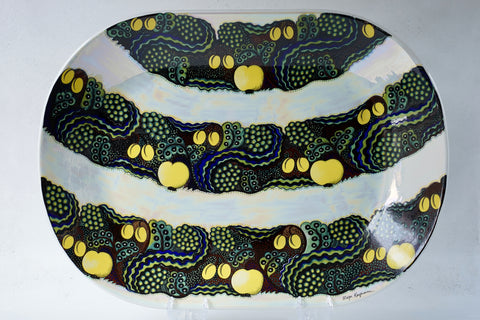We would like to introduce you to some rare items that have arrived.
This is a limited edition of 500 art plates produced by Birger Kaipiainen from 1954 to 1958.
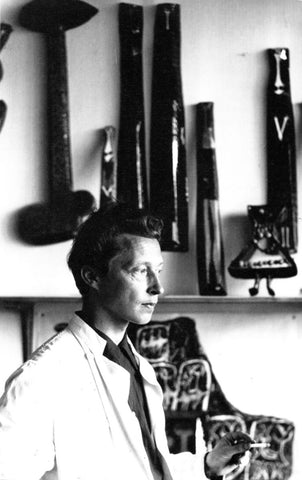
(Photo: Birger Kaipiainen)
Birger Kaipiainen was born in Finland in 1915 and studied at Finnish art schools, specifically the University of Art and Design (now Aalto University) in Helsinki, before working at the Arabia Factory, a prominent Finnish ceramic manufacturer. started.
Kaipiainen began his career in the late 1930s at the Arabian factory. There was a time in the aftermath of World War II when cultural activities were considered secondary and public support and resources were limited. Artists who have experienced the horrors of war and difficult times are often drawn to more universal and hopeful themes, such as the beauty of nature and the dignity of life. Motifs such as birds, flowers, and paradise that frequently appear in Kaipiainen's works are thought to reflect this orientation toward universal beauty.
During this period, Kaipiainen actively researched glazes and shapes, producing many unique works with nature as motifs. Kaipiainen's style expands the possibilities of ceramic, which combines artistry and practicality, and has gained attention in the world of Scandinavian design. Kaipiainen's masterpieces from this period include original pottery with bird and plant motifs.
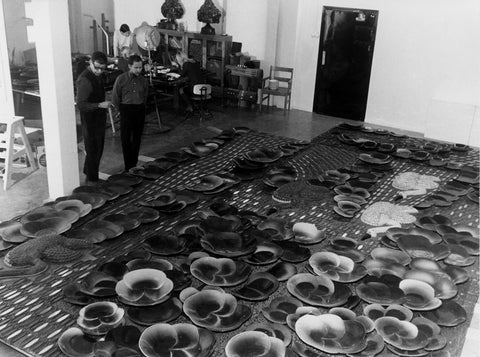
(Photo: Kaipiainen inspecting products, man on the left)
Speaking of Kaipiainen's works, the masterpiece "Paratissi" is well known, but Paratissi was released in 1969. Although it depicts a Christian worldview of paradise, Paratissi had actually been pursuing mythological motifs for more than 10 years before his appearance. This plate is a masterpiece that allows you to feel the origin of Kaipiainen's creation.
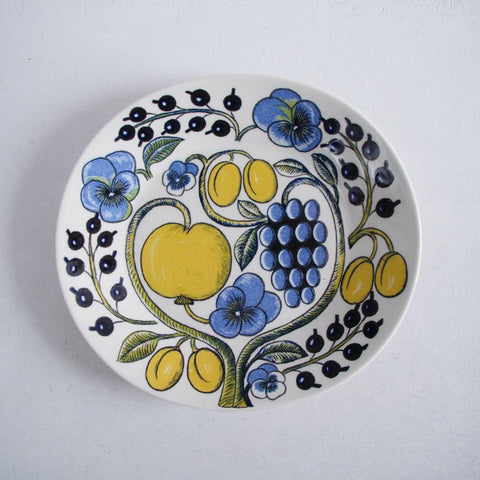
(Photo: Timeless masterpiece Paratissi)
During his time at Rorstrand, Kaipiainen is said to have greatly developed his own style and technique. At Rorstrand, we set out to create artistic ceramic pieces that stand out from the production of general industrial ceramics. The distinctive style he developed during this period became a theme that would continue throughout his career and greatly influenced his later work.
Kaipiainen's work at Rorstrand was to "blur the boundaries between art and industrial design." While plates are works of art, they are also everyday fixtures, contributing to the establishment of a unique way of using Scandinavian tableware that brings joy both to using and looking at. Kaipiainen is known for his highly individualistic expressions, particularly through experimentation with glazes and colors.
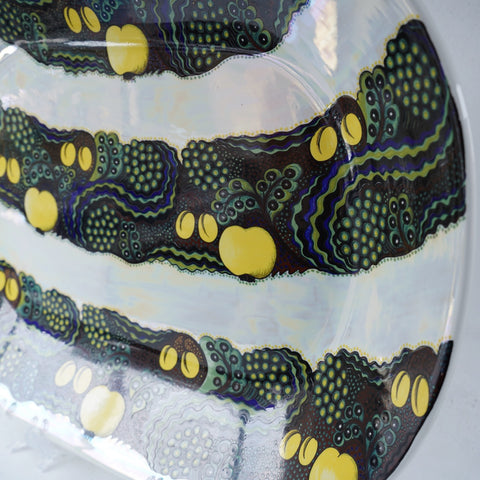
(Photo: Kaipiainen's favorite apple motif)
The apple represents the forbidden fruit eaten by Adam and Eve in the Old Testament. By the way, a little known fact is that apples do not appear in the Bible, but are simply referred to as ``forbidden fruit.'' Apples are a European value that spread in later generations, and in Slavic-speaking Eastern Europe, the forbidden fruit is sometimes considered to be grapes.
Returning to the topic, what made Kaipiainen unique was the elaborate decoration. In Scandinavian design, design and simplicity are generally talked about as a set, but Kaipiainen's work is extremely decorative, setting it apart from Scandinavian design, which is said to be simple and modern.
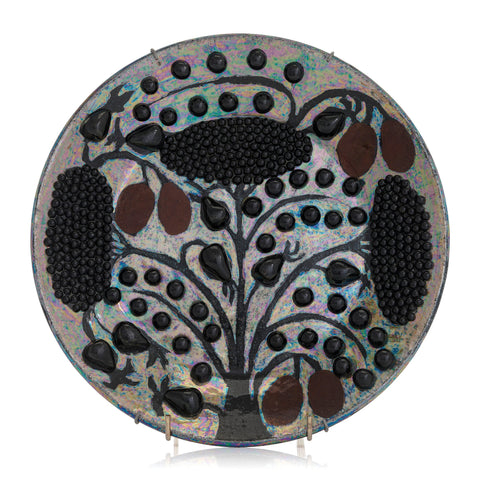

(Photo: Plate 2 of Kaipiainen's unique pieces)
However, if you ask me if the design is cheerful and refreshing like a blue sky, this is definitely not the case. Kaipiainen is said to have been influenced by Dali and other surrealists and Dada, but his designs, which depict imaginary landscapes, have a kind of gloominess that cannot be described as beauty alone, or, if you will, an eerie feeling. There is wandering.
Kaipiainen's works are very popular in Japan as well, and I think all fans of Arabic tableware such as Paratissi and Sunununtai are familiar with them. However, behind the cheerful designs that have become worldwide hits lies Kaipiainen's own conflict and desire for paradise, and the unique pieces (one-of-a-kind pieces) that are thought to best represent his artistry are actually dark in color. The overwhelming majority are.
(Photo: "Sunnuntai", which is as popular as Paratissi)
Looking at this 500-piece limited edition plate again, it is not only bright, but also has a certain kind of darkness and eeriness to it. However, for the author Kaipiainen, this is part of the landscape of paradise.
As you can see from the unique pieces, Kaipiainen's style is to stick to the style of plates, rather than the square expressions of ceramic plates. In general Scandinavian design, large-sized ceramic art is in the form of ceramic plates, but Kaipiainen is an artist who basically never strayed from the framework of a ``plate.''
The 500-piece limited edition plate is over 60cm wide and about the size of a TV, but it is still a plate. I don't know if anyone uses it that way, but it can also be used as a serving plate.
There are several reasons why Birger Kaipiainen chose to use the plate format to create unique pieces.
Once again, Kaipiainen had the desire to create a work that had both functionality as a vessel for everyday use and value as a work of art. A plate is a form that can combine both elements.
One of Kaipiainen's interests was to respect the traditional forms and motifs of ceramics while reconstructing them with a modern interpretation. The plate is one of the basic forms that have been used since ancient times, and it can be said that he was exploring new techniques and expressions through this traditional medium.
It can be said that plates were a particularly expressive canvas for him.
Please click here for the product page introduced this time♪


